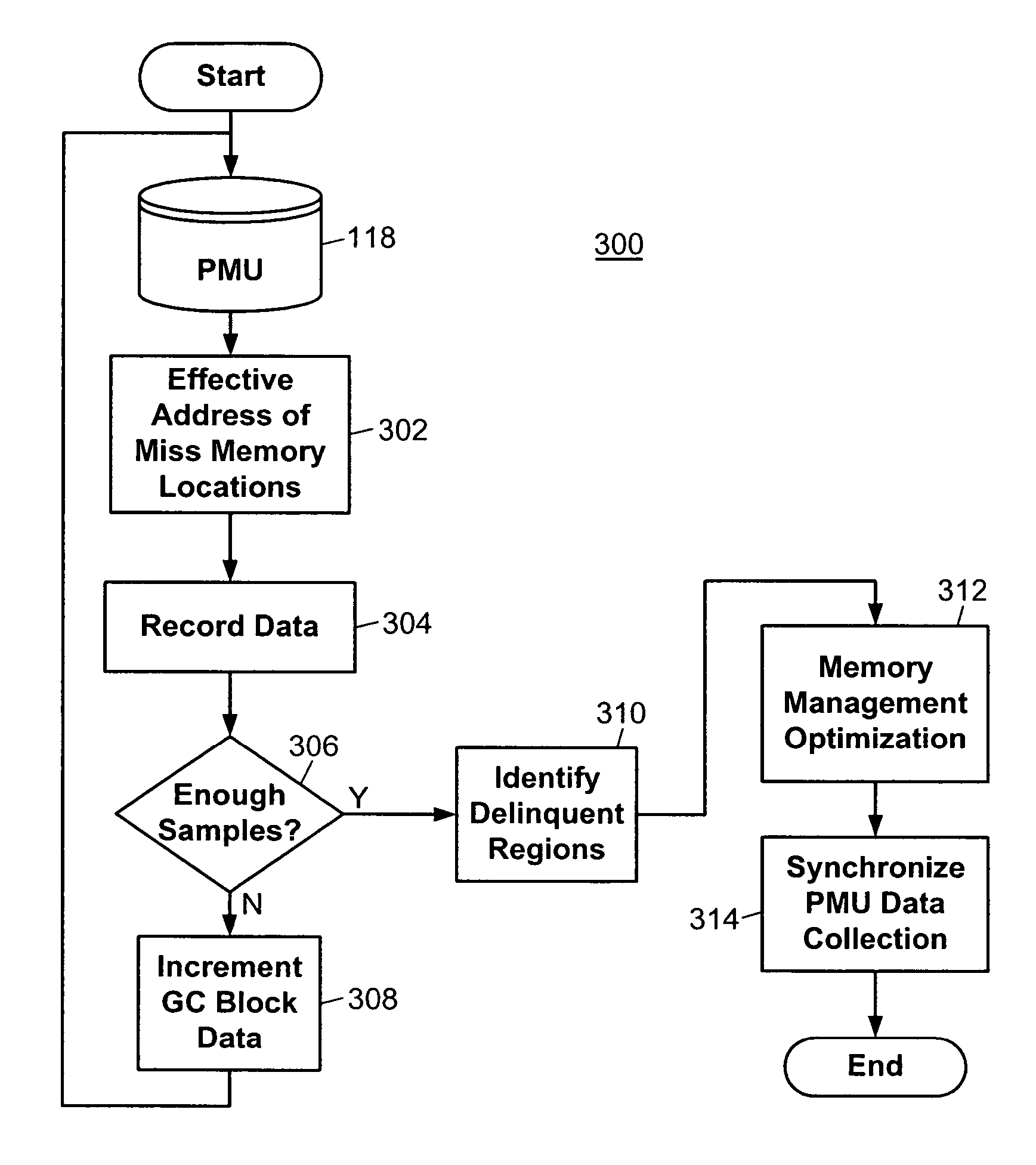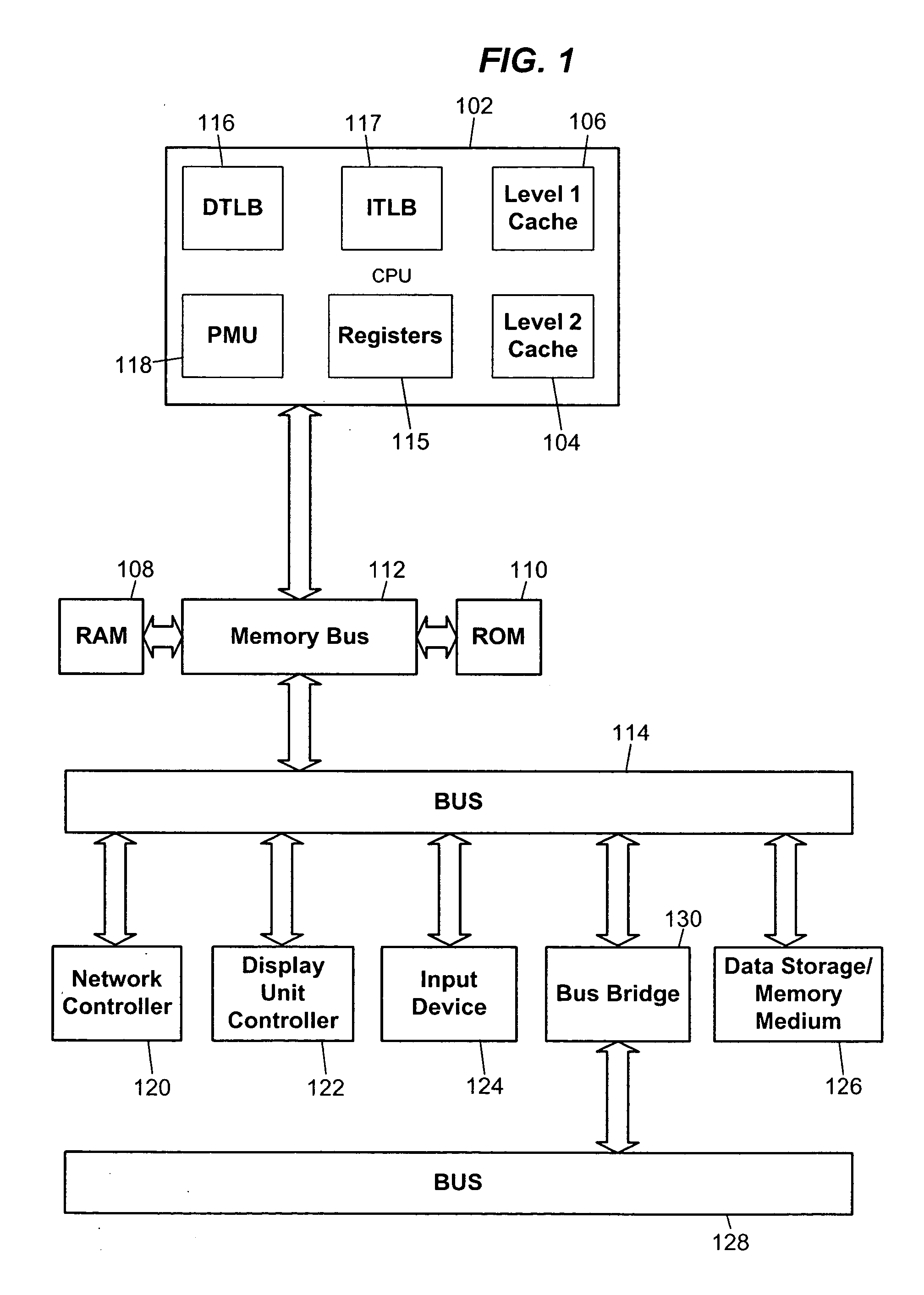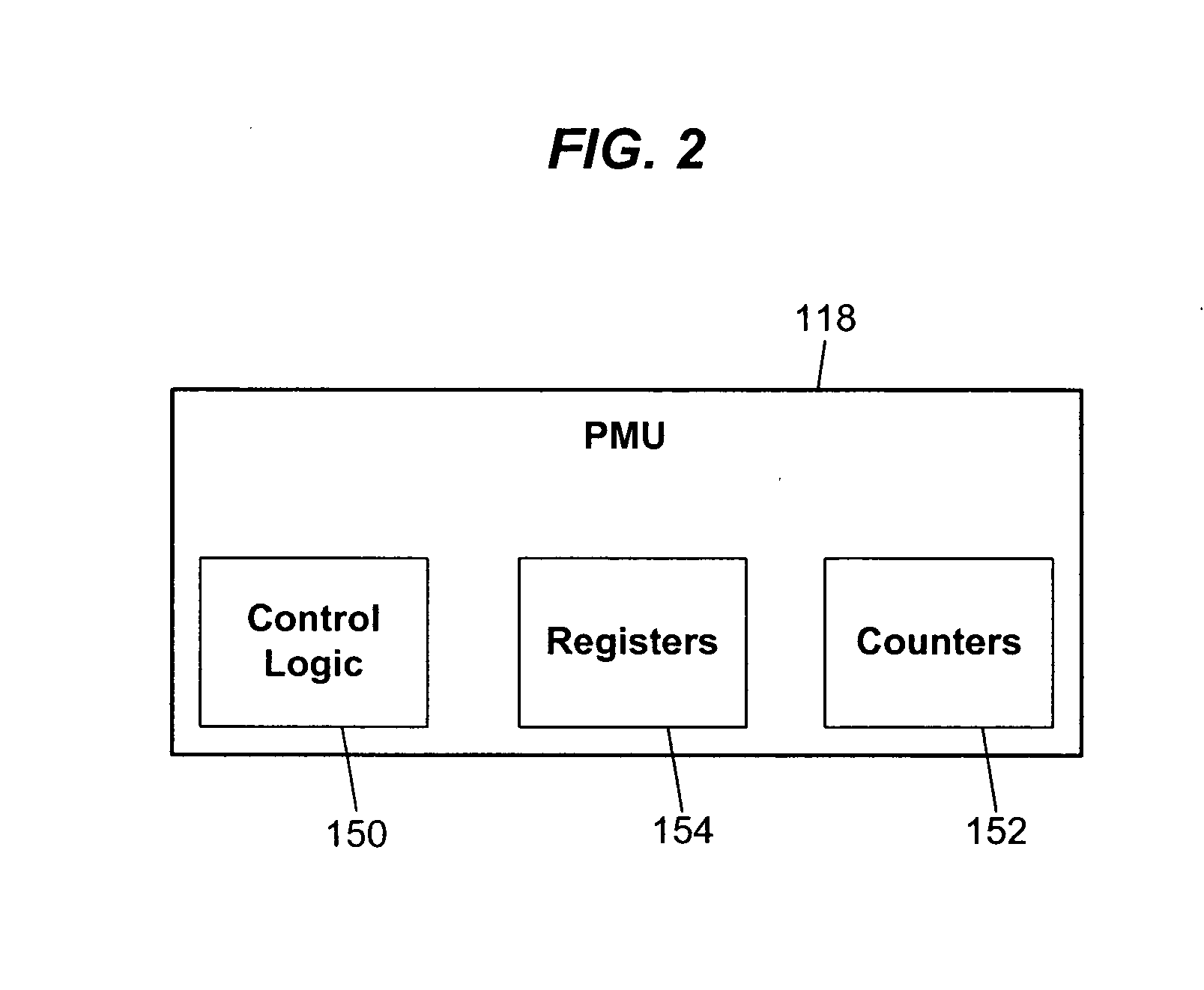Dynamic performance monitoring-based approach to memory management
a memory management and performance monitoring technology, applied in the field of memory management, can solve the problems of memory stall, memory speed may not improve, clock speed is not only affected, and memory stall is not known
- Summary
- Abstract
- Description
- Claims
- Application Information
AI Technical Summary
Problems solved by technology
Method used
Image
Examples
Embodiment Construction
[0019] Various techniques are described for optimizing memory management within a processor system. By focusing the work performed by memory management, the execution of application code, i.e., mutators, in dynamic managed runtime environments like Java and .Net environments running on the processor system may be improved. The techniques may be implemented on processors or processor architectures capable of performance monitoring by using hardware monitoring. Sample microprocessors included Pentium® 4 (Precise Event Based Sampling) and Itanium® processors (Performance Monitoring Unit) available from Intel Corporation of Santa Clara, Calif. The techniques may be implemented into dedicated processor environments, as well, of which the input / output (I / O) processors used in storage, networking and embedded applications are examples. In I / O applications, e.g., servers, workstations, and storage subsystems, the techniques may be realized to optimize memory management across a network of d...
PUM
 Login to View More
Login to View More Abstract
Description
Claims
Application Information
 Login to View More
Login to View More - R&D
- Intellectual Property
- Life Sciences
- Materials
- Tech Scout
- Unparalleled Data Quality
- Higher Quality Content
- 60% Fewer Hallucinations
Browse by: Latest US Patents, China's latest patents, Technical Efficacy Thesaurus, Application Domain, Technology Topic, Popular Technical Reports.
© 2025 PatSnap. All rights reserved.Legal|Privacy policy|Modern Slavery Act Transparency Statement|Sitemap|About US| Contact US: help@patsnap.com



